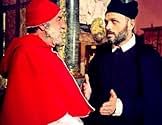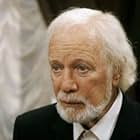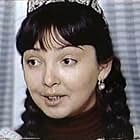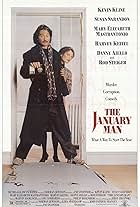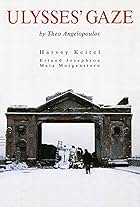Various battles including that of Lepanto.Various battles including that of Lepanto.Various battles including that of Lepanto.
Photos
- Directors
- Writers
- All cast & crew
- Production, box office & more at IMDbPro
Storyline
Featured review
A historical drama. A unique painting that is almost forgotten by everyone, although it was shot relatively recently. And already at the end of the Soviet Union, together with Italy, Spain, the USA and Morocco. This is an international project that had no analogues in the world at that time (especially about that historical period), but alas, human memory turned out to be short. The author of this review himself did not know about the existence of such a painting until it was mentioned by the respected military historian Klim Alexandrovich Zhukov. And here is a brief opinion - A good Soviet film about a little-known battle. There were both advantages and disadvantages in the picture, and it's worth talking about it all. And that's the end of this introduction and let's move on to the interesting.
So, the advantages: 1. The story of Sultan Abdelmalek - the script of the picture revolves mainly around the story of this prince of the blood, who, after the accession of his elder brother Abdullah the First al-Ghalib (and before that, the murder of his own father Sultan Mohamed al-Sheikh by the Turks), was forced with two younger brothers to flee to neighboring Algeria (which was subordinate to Turkey) so that their brother would not kill them in an attempt to keep the throne. The exile of Abdelmalek and his younger brother Ahmad al-Mansour lasted for seventeen years. During this time, the prince had to get to know the Ottoman Empire from the inside, study its strengths and weaknesses, adopt the best and regain his rightful throne of Morocco. They will show us an honest and just ruler who can not only expel the usurper from the throne, but also prevent the invasion of Portugal on his land. And although the real Abdelmalek was not so clean (such people do not live long in big politics), he still looks much better against the background of other rulers. The Sultan had a sad end, but he managed to do several important things for the country, without which Morocco would not be the country we know it now.
2. The history of Europe and North Africa in the 1570s - the picture managed to tell and show not only the local history of Prince Abdelmalek, but also the European politics of the 1570s - and this guest is never seen in a big movie. We will be shown and told the inner cuisine and the difficult relationship between Morocco, Algeria, the Ottoman Empire, the Pope, the French Kingdom, the Spanish Empire and Portugal. Here you have a conflict of religions, and the attitude towards Jews in Muslim and Christian countries, the Inquisition, uprisings, a tangle of contradictions of European countries and their attitudes towards the Ottoman Empire. And although all this is shown briefly, it becomes easily clear to a savvy person what time it is, and who is here. And this is extremely interesting, because there is still no big movie on this topic, except for this picture.
3. The Battle of Lepanto in 1571 is one of the greatest naval battles of Modern Times, in which the fleet of the Catholic Holy League (union of Spain, Venice, SRIGNA, Italian states under the patronage of the Pope) defeated the fleet of the Ottoman Empire and Berber pirates. This battle was the last battle of the galley fleet, the Turks suffered huge losses. Although the war between the League and Turkey did not end (and in general peace was concluded taking into account the occupied territories of each side a few years later), but for Europe it was a propaganda event, and in history it took the place of one of the greatest naval battles. This battle is present in the picture, and some characters participate in it, and from both sides. It should be repeated - apart from this picture, THERE is NOT A SINGLE FEATURE FILM about this battle. How did it happen? One can only guess. What can I say - so far no one has filmed The Song of Roland.
4. The "Battle of the Three Kings" of 1578 - this is how the battle of El Ksar el Kebir between the army of the Moroccan Sultan Abdelmalek and the Portuguese army of King Sebastian the First, in whose ranks Moroccans loyal to the deposed Sultan Abdullah Mohammed fought, entered the historiography. Therefore, it was more correct to call the battle "the battle of one king and two sultans." As a result of Sultan Abdelmalek's bold action, the Portuguese army was lured to an unfavorable battlefield, and lost it because of the youthful maximalism of King Sebastian the First and because of the tenacity of the Adbelmalek army. Almost the entire Portuguese army died on the battlefield, and this will turn out to be sad for the country in the shortest possible way (the young king did not have time to marry and leave an heir, Spain took advantage of the ensuing civil strife, and Portugal lost its independence for sixty years). For all three leaders, this battle was the last. Surprisingly, in the picture, this battle is given catastrophically little time. We were not shown the senseless attack of King Sebastian on the Moroccan army, the encirclement of the remaining Portuguese army and their flight after a long resistance, the brilliant maneuver of the Moroccan cavalry under the command of Sultan Ahmad al-Mansour's brother. But, nevertheless, they gave a basis for understanding, and this is good.
5. Costumes and scenery - the picture was shot in Morocco (the basis and panoramic views), Crimea (the harem of Suleiman the Magnificent) and Samarkand (the exile of one of the heroines). The costumes are pleasing to the eye. The author of this review did not find any historical errors (but he is not a professional in that era, so he may be mistaken). It is clear that the Moroccan comrades followed the creation of a suitable entourage, because this is their national history and a reason to be happy for their ancestors, who drove the European invaders from their land, and the next Sultan Ahmad al-Mansour did a lot for the rise of Morocco, for which its inhabitants are still honored.
So, the disadvantages: 1. Many characters and many events - the vicissitudes with the Holy League, contradictions with France (which has been actively trading with Turkey for decades and contributes to the prosperity of its country with its neutrality), Spanish affairs, religious contradictions, Sebastian the First's dreams of returning lost lands to Morocco, the formation of Abdelmalek, the Battle of Lepanto and military talents Don Juan of Austria, the friction in the harem of the Turkish sultans, and so on. The writers have piled so much into two episodes that it would take a series with at least ten episodes to reveal. Instead of focusing on the battle of the three kings and the events around it, so that the audience would understand why the Portuguese lost, and rejoice at the victory of the Moroccans of Abdelmalek, they dumped a bunch of characters and did not reveal many of them in any way. Because of this approach, the viewer risks losing the thread of the narrative at the very beginning, and given the local installation (everything happens quickly and without much eyeliner), many things may not be understood with this method of narration. You can't even tell Turks from Moroccans here, or Spaniards from Portuguese.
2. Historical mistakes - Sultan Abdelmalek was not poisoned by anyone, he had a long-standing disease - fever, which only intensified from the last years of the struggle for the throne and the protection of the country from the encroachments of the Portuguese and Turks. The Sultan died a natural death. Although the poisoning version has a right to exist (if you believe in the conspiracy theory). His brother Murad did not kill Selim the Second (Selim was a drunkard, and this killed him). If there were any more historical mistakes, then you are welcome to comment.
The international cast was pleased, so I'll tell them all that they were great fellows! Bravo! The sad thing is that the rental was only in the USSR and Spain, and the picture did not win much fame, although it is not a masterpiece, but a pretty good costumed historical drama about such events that are practically unknown. If they know about the Hundred Years' War, they know about the Thirty Years' War, they know about the battle of the three emperors, about the Battle of Crecy, Agincourt, the two battles of Poitiers (732 and 1356), then not so much is known about the Battle of Lepanto, and only a few about the battle of the three kings. And this picture will give you at least a basis for knowledge about that battle and that historical period, because there is simply no alternative!
A score of 7 out of 10 and a recommendation to watch!
So, the advantages: 1. The story of Sultan Abdelmalek - the script of the picture revolves mainly around the story of this prince of the blood, who, after the accession of his elder brother Abdullah the First al-Ghalib (and before that, the murder of his own father Sultan Mohamed al-Sheikh by the Turks), was forced with two younger brothers to flee to neighboring Algeria (which was subordinate to Turkey) so that their brother would not kill them in an attempt to keep the throne. The exile of Abdelmalek and his younger brother Ahmad al-Mansour lasted for seventeen years. During this time, the prince had to get to know the Ottoman Empire from the inside, study its strengths and weaknesses, adopt the best and regain his rightful throne of Morocco. They will show us an honest and just ruler who can not only expel the usurper from the throne, but also prevent the invasion of Portugal on his land. And although the real Abdelmalek was not so clean (such people do not live long in big politics), he still looks much better against the background of other rulers. The Sultan had a sad end, but he managed to do several important things for the country, without which Morocco would not be the country we know it now.
2. The history of Europe and North Africa in the 1570s - the picture managed to tell and show not only the local history of Prince Abdelmalek, but also the European politics of the 1570s - and this guest is never seen in a big movie. We will be shown and told the inner cuisine and the difficult relationship between Morocco, Algeria, the Ottoman Empire, the Pope, the French Kingdom, the Spanish Empire and Portugal. Here you have a conflict of religions, and the attitude towards Jews in Muslim and Christian countries, the Inquisition, uprisings, a tangle of contradictions of European countries and their attitudes towards the Ottoman Empire. And although all this is shown briefly, it becomes easily clear to a savvy person what time it is, and who is here. And this is extremely interesting, because there is still no big movie on this topic, except for this picture.
3. The Battle of Lepanto in 1571 is one of the greatest naval battles of Modern Times, in which the fleet of the Catholic Holy League (union of Spain, Venice, SRIGNA, Italian states under the patronage of the Pope) defeated the fleet of the Ottoman Empire and Berber pirates. This battle was the last battle of the galley fleet, the Turks suffered huge losses. Although the war between the League and Turkey did not end (and in general peace was concluded taking into account the occupied territories of each side a few years later), but for Europe it was a propaganda event, and in history it took the place of one of the greatest naval battles. This battle is present in the picture, and some characters participate in it, and from both sides. It should be repeated - apart from this picture, THERE is NOT A SINGLE FEATURE FILM about this battle. How did it happen? One can only guess. What can I say - so far no one has filmed The Song of Roland.
4. The "Battle of the Three Kings" of 1578 - this is how the battle of El Ksar el Kebir between the army of the Moroccan Sultan Abdelmalek and the Portuguese army of King Sebastian the First, in whose ranks Moroccans loyal to the deposed Sultan Abdullah Mohammed fought, entered the historiography. Therefore, it was more correct to call the battle "the battle of one king and two sultans." As a result of Sultan Abdelmalek's bold action, the Portuguese army was lured to an unfavorable battlefield, and lost it because of the youthful maximalism of King Sebastian the First and because of the tenacity of the Adbelmalek army. Almost the entire Portuguese army died on the battlefield, and this will turn out to be sad for the country in the shortest possible way (the young king did not have time to marry and leave an heir, Spain took advantage of the ensuing civil strife, and Portugal lost its independence for sixty years). For all three leaders, this battle was the last. Surprisingly, in the picture, this battle is given catastrophically little time. We were not shown the senseless attack of King Sebastian on the Moroccan army, the encirclement of the remaining Portuguese army and their flight after a long resistance, the brilliant maneuver of the Moroccan cavalry under the command of Sultan Ahmad al-Mansour's brother. But, nevertheless, they gave a basis for understanding, and this is good.
5. Costumes and scenery - the picture was shot in Morocco (the basis and panoramic views), Crimea (the harem of Suleiman the Magnificent) and Samarkand (the exile of one of the heroines). The costumes are pleasing to the eye. The author of this review did not find any historical errors (but he is not a professional in that era, so he may be mistaken). It is clear that the Moroccan comrades followed the creation of a suitable entourage, because this is their national history and a reason to be happy for their ancestors, who drove the European invaders from their land, and the next Sultan Ahmad al-Mansour did a lot for the rise of Morocco, for which its inhabitants are still honored.
So, the disadvantages: 1. Many characters and many events - the vicissitudes with the Holy League, contradictions with France (which has been actively trading with Turkey for decades and contributes to the prosperity of its country with its neutrality), Spanish affairs, religious contradictions, Sebastian the First's dreams of returning lost lands to Morocco, the formation of Abdelmalek, the Battle of Lepanto and military talents Don Juan of Austria, the friction in the harem of the Turkish sultans, and so on. The writers have piled so much into two episodes that it would take a series with at least ten episodes to reveal. Instead of focusing on the battle of the three kings and the events around it, so that the audience would understand why the Portuguese lost, and rejoice at the victory of the Moroccans of Abdelmalek, they dumped a bunch of characters and did not reveal many of them in any way. Because of this approach, the viewer risks losing the thread of the narrative at the very beginning, and given the local installation (everything happens quickly and without much eyeliner), many things may not be understood with this method of narration. You can't even tell Turks from Moroccans here, or Spaniards from Portuguese.
2. Historical mistakes - Sultan Abdelmalek was not poisoned by anyone, he had a long-standing disease - fever, which only intensified from the last years of the struggle for the throne and the protection of the country from the encroachments of the Portuguese and Turks. The Sultan died a natural death. Although the poisoning version has a right to exist (if you believe in the conspiracy theory). His brother Murad did not kill Selim the Second (Selim was a drunkard, and this killed him). If there were any more historical mistakes, then you are welcome to comment.
The international cast was pleased, so I'll tell them all that they were great fellows! Bravo! The sad thing is that the rental was only in the USSR and Spain, and the picture did not win much fame, although it is not a masterpiece, but a pretty good costumed historical drama about such events that are practically unknown. If they know about the Hundred Years' War, they know about the Thirty Years' War, they know about the battle of the three emperors, about the Battle of Crecy, Agincourt, the two battles of Poitiers (732 and 1356), then not so much is known about the Battle of Lepanto, and only a few about the battle of the three kings. And this picture will give you at least a basis for knowledge about that battle and that historical period, because there is simply no alternative!
A score of 7 out of 10 and a recommendation to watch!
- lyubitelfilmov
- Aug 13, 2024
- Permalink
Details
Contribute to this page
Suggest an edit or add missing content

Top Gap
By what name was La batalla de los Tres Reyes (1990) officially released in Canada in English?
Answer
